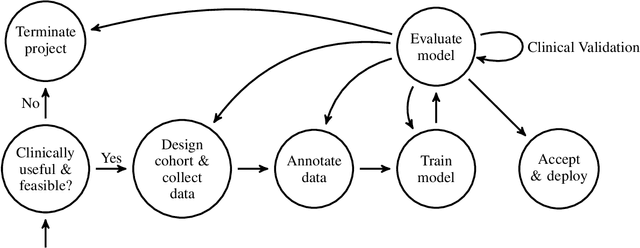Julia Strout
An Overview and Case Study of the Clinical AI Model Development Life Cycle for Healthcare Systems
Mar 26, 2020

Abstract:Healthcare is one of the most promising areas for machine learning models to make a positive impact. However, successful adoption of AI-based systems in healthcare depends on engaging and educating stakeholders from diverse backgrounds about the development process of AI models. We present a broadly accessible overview of the development life cycle of clinical AI models that is general enough to be adapted to most machine learning projects, and then give an in-depth case study of the development process of a deep learning based system to detect aortic aneurysms in Computed Tomography (CT) exams. We hope other healthcare institutions and clinical practitioners find the insights we share about the development process useful in informing their own model development efforts and to increase the likelihood of successful deployment and integration of AI in healthcare.
Do Human Rationales Improve Machine Explanations?
May 31, 2019


Abstract:Work on "learning with rationales" shows that humans providing explanations to a machine learning system can improve the system's predictive accuracy. However, this work has not been connected to work in "explainable AI" which concerns machines explaining their reasoning to humans. In this work, we show that learning with rationales can also improve the quality of the machine's explanations as evaluated by human judges. Specifically, we present experiments showing that, for CNN- based text classification, explanations generated using "supervised attention" are judged superior to explanations generated using normal unsupervised attention.
 Add to Chrome
Add to Chrome Add to Firefox
Add to Firefox Add to Edge
Add to Edge